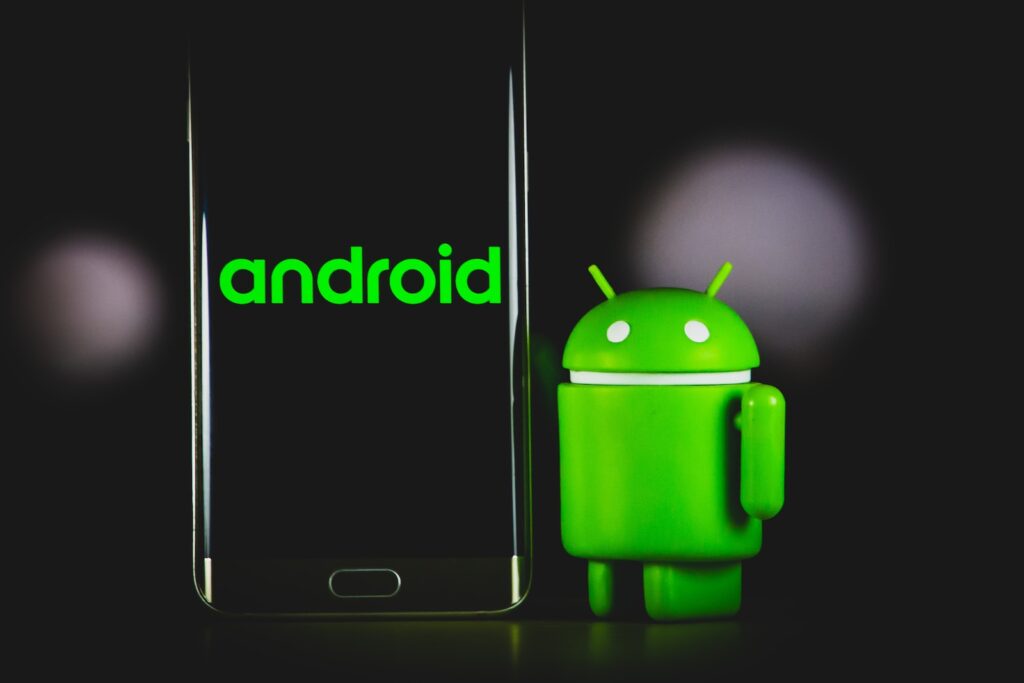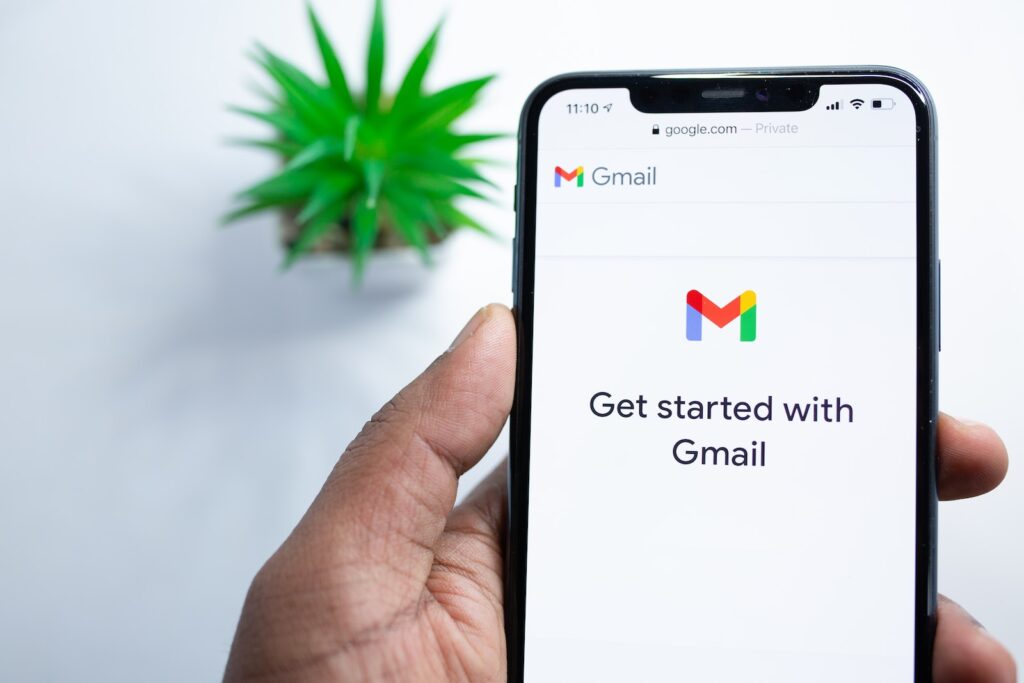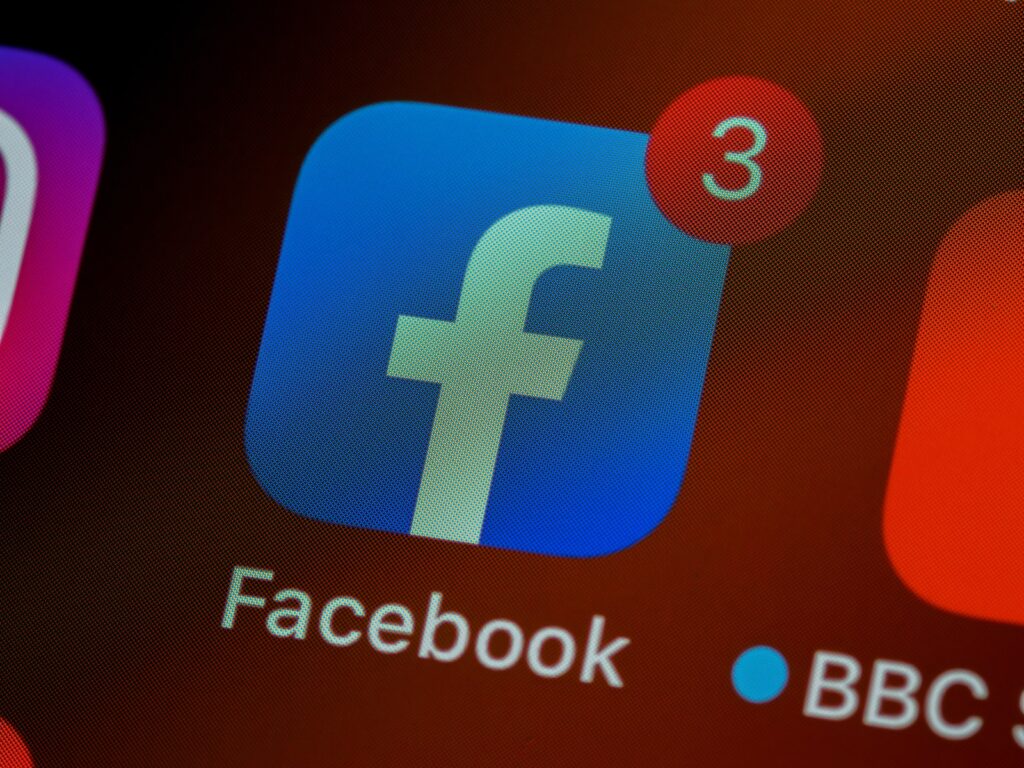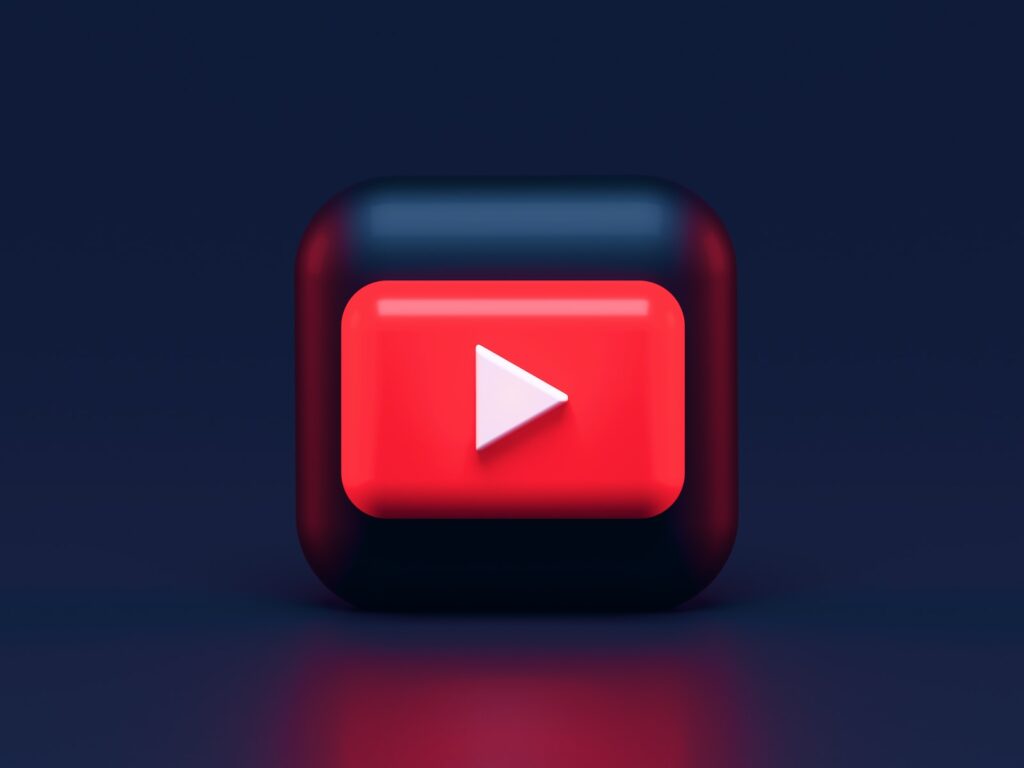Marketers are now choosing to develop mobile apps instead of investing in websites.
This is because there are more mobile users than desktop users, and this gap is getting bigger.
People are embracing mobile technology because it offers convenience, ease, and a great user experience.
Different studies show different numbers, but most of them favour applications for smartphones.
In a global survey, 85% of people said they preferred using mobile apps over mobile websites.
Smartphones and mobile apps have made our lives easier and can pretty much do anything we need them to do.
Applications for smartphones are becoming more popular because they provide a better user experience.
They are designed specifically for smartphones and offer smoother performance and better features compared to mobile websites.
This opens up endless possibilities for developers to create innovative and interactive experiences for users.
In this blog, we will share the top 15 applications for smartphones in 2023.
What Are Mobile Applications?

In 2023, it’s projected that mobile applications will bring in more than $935 billion.
Wondering what are mobile applications?
Applications for smartphones, commonly referred to as mobile apps, are software programs designed to run on mobile devices like smartphones and tablets.
These apps are created to perform specific tasks, provide entertainment, offer services, or enhance the user’s overall experience on their mobile devices.
Mobile apps are downloaded and installed from app stores or marketplaces, such as the Apple App Store or Google Play Store.
Types Of Mobile Applications That You Should Know About
Now that you know what are mobile applications, it is crucial to know that there are several types of mobile applications, each catering to different user needs and purposes.
Here are some common types of mobile applications:
1. Native Apps
Native apps are developed for a specific platform, such as iOS (Apple) or Android.
They are written in programming languages like Swift or Objective-C for iOS and Java or Kotlin for Android.
Native apps offer high performance and are optimized for the respective platform’s capabilities.
Here are some specifics:
- Platform-Specific: Designed for specific platforms like iOS or Android.
- Language: Utilize languages like Swift or Objective-C for iOS, and Java or Kotlin for Android.
- Optimized Performance: They can tap directly into the hardware of the device, ensuring smooth performance and a better user experience.
- Access to Features: Complete access to device features such as the camera, GPS, and sensors.
2. Web Apps
Web apps are essentially websites designed to work on mobile browsers.
They don’t need to be downloaded or installed and can be accessed directly through a browser.
They are cross-platform and require an active internet connection to function.
Here are some web app highlights:
- No Installations: Directly accessible through a browser.
- Cross-Platform: Can be operated on any device with an internet browser.
- Internet Dependency: Rely on an active internet connection.
- Update Ease: Easier to maintain and update since they’re not tied to app stores.
3. Hybrid Apps
Hybrid apps combine elements of both native and web apps.
They are developed using web technologies (HTML, CSS, JavaScript) and then wrapped in a native container.
This allows them to be distributed through app stores and have access to device features while retaining some cross-platform compatibility.
Here’s a closer look at their specifications.
4. Development
Built using standard web technologies like HTML, CSS, and JavaScript.
5. Native Wrapper
Enclosed within a native application shell, allowing them to be distributed in app stores.
6. Access to Features
Can access a device’s functionalities similar to native apps, while also being platform-agnostic.
7. Progressive Web Apps (PWAs)
PWAs are a type of web app that offers a more app-like experience on a browser.
They can be accessed through a web URL but can also be installed on the user’s home screen, similar to native apps.
PWAs provide offline capabilities and enhanced performance.
Some details include:
- Offline Capabilities: Can operate even without an internet connection.
- Installation: Allows users to “install” the web app onto their device’s home screen without going through an app store.
- Performance: Enhanced speed and performance compared to traditional web apps.
8. Cross-Platform Apps
Cross-platform apps are built using frameworks like React Native, Flutter, or Xamarin.
They allow developers to create a single codebase that can be used to deploy apps on multiple platforms. This approach saves development time and resources.
Here are some key characteristics that you should be familiar with:
- Frameworks: Utilize frameworks such as React Native, Flutter, and Xamarin.
- Shared Codebase: One code serves multiple platforms, making it cost-effective.
- Flexibility: While they save on development time, they may sometimes not offer the same level of optimization as native apps.
9. Augmented Reality (AR) Apps
AR apps use the device’s camera to overlay digital elements in the real world.
They provide interactive experiences, such as games, navigation, and educational content, by blending the physical and digital worlds.
Here’s a closer inspection:
- Real-time Interaction: Provides real-world, real-time interactivity.
- Usage: Popular in gaming (e.g., Pokémon Go), retail (e.g., IKEA Place for furniture visualization), education, and navigation.
- Hardware: Often requires devices with powerful processors and cameras for optimal performance.
10. Virtual Reality (VR) Apps
VR apps create immersive environments where users can interact with a completely digital world.
These apps are often used for gaming, simulations, training, and entertainment.
- Engaging Experiences: Whether for gaming, education, or training, VR apps allow users to immerse themselves in settings ranging from fantastical worlds to reconstructed historical sites.
- Hardware Integration: Often requires specific gear like Oculus Rift, HTC Vive, or PlayStation VR to function.
- Diverse Usage: Beyond entertainment, they’re leveraged for professional training scenarios, medical therapy, and real estate virtual tours.
11. Gaming Apps
Gaming apps are designed for entertainment purposes and offer a wide range of games, from simple puzzles to complex multiplayer experiences.
- Variety: From candy-crushing puzzles and epic role-playing games to real-time strategy battles.
- Engagement Mechanisms: Many feature in-app purchases, power-ups, and daily rewards to boost user engagement.
- Community: Multiplayer features and global leaderboards can foster a sense of community and competition.
Utility apps serve specific functions, such as weather forecasting, language translation, calculators, or flashlight apps. They are designed to make daily tasks easier and more convenient.
12. Utility Apps
They are the unsung heroes of our daily routines, simplifying tasks and boosting productivity.
- Quick Access: Designed for fast operations, like checking the weather or using a calculator.
- Diverse Functions: Some come pre-installed on devices while others, like QR code scanners or measurement tools, can be downloaded as needed.
- User Reliance: Due to their practical nature, many users rely on them daily.
13. Social Media Apps

Social media apps connect users to their social networks, enabling them to share posts, photos, and videos, and interact with friends, family, and followers.
Social media apps form the nexus of modern digital social interaction.
- Sharing and Interaction: Facilitates sharing moments through photos, videos, and status updates.
- Networking: Connect with people, join groups, attend events, and more.
- Business and Promotion: Also used by brands and influencers for promotions, ads, and customer interaction.
14. Productivity Apps
Productivity apps help users manage tasks, schedules, emails, and documents.
They often include features like to-do lists, calendars, note-taking, and file storage.
They are designed to optimize efficiency and organization.
- Task Management: Apps like Trello or Asana help manage projects and tasks.
- Document Handling: Solutions like Google Docs or Microsoft Office allow for document creation, editing, and sharing.
- Time Management: Calendars, reminders, and note-taking apps like Evernote or Notion help users stay on top of their schedules.
15. Health and Fitness Apps
Health and fitness apps track physical activity, monitor sleep patterns, offer workout routines, and provide nutritional information to help users maintain a healthy lifestyle.
- Activity Tracking: Monitor steps, distance, and calories burned.
- Workout Guides: Offer routines for various fitness levels and goals, sometimes with video demonstrations.
- Diet and Nutrition: Track meals, count calories, or even get diet plans. Some apps integrate with wearables for real-time health metrics like heart rate.
- Mindfulness and Meditation: Some apps, like Headspace or Calm, offer guided sessions for relaxation and mental well-being.
In the evolving digital landscape, apps continue to play a pivotal role, not just for entertainment, but as integral tools that shape our daily lives, health, and productivity.
Up next, our rundown of the best applications for smartphones comes in to further illustrate the concept.
Read on…
15 Best Applications For Smartphones In 2023 & Beyond
We have divided the following applications into their respective categories. So, if it’s entertainment, you might find Netflix, Hulu, Disney+ and other apps.
This is to help you understand each respective category and the apps underneath it.
Let’s find out what we have in store for you.
Best Android Apps

The Google Play Store offers close to 2.87 million applications for users to download.
Google’s Android operating system has completely changed the mobile app market.
It’s so popular that it’s used not only on smartphones, but also on smartwatches, car dashboards, and even refrigerators!
Let me tell you about some of the most downloaded Android apps.
1. Gmail

First up, we have Gmail. It’s a smartphone application example that lets you manage multiple inboxes effortlessly.
You get a whopping 15 GB of free storage, and it’s one of the most popular Android apps in the Google Play Store.
A product of Google, it’s an excellent example of a user-friendly design with robust functionality.
- Unified Inboxes: Easily manage and switch between multiple email accounts, including non-Google ones.
- Advanced Search: Thanks to Google’s search prowess, finding an old email based on scant details is incredibly straightforward.
- Integrated with Google Workspace: Seamless integration with Google Drive, Calendar, and Meet makes professional tasks and collaborations smooth.
- Security: Advanced phishing protection and two-factor authentication ensure user data stays safe.
2. Facebook

Next, we have Facebook. I’m sure you’ve heard of it – it’s the most popular social networking mobile app out there.
With Facebook, you can stay connected with your friends, share all sorts of stuff like videos and photos, and stay updated with the latest posts.
Plus, it integrates seamlessly with your Android notification centre.
Facebook has grown from a college networking site to a global social media behemoth, shaping the very essence of digital social interaction.
- Profile Customization: Users can create detailed profiles, with photos, personal details, and life events chronicled in a timeline format.
- Interactive Posts: Allows sharing of text, photos, videos, links, and even hosting live video streams.
- Groups and Pages: Facilitates community building around shared interests, be it for hobbies, causes, or businesses.
- Marketplace: Users can buy and sell items within their local communities, adding an e-commerce aspect to the platform.
- Events: From birthday parties to major public events, Facebook allows users to create, invite, and manage events seamlessly.
3. WhatsApp

Now, let’s talk about WhatsApp Messenger. It’s a free messaging app that lets you text and call your friends and family using your mobile internet connection.
It’s owned by Facebook and used by over 990 million people worldwide. It’s especially popular among the younger crowd.
WhatsApp Messenger has revolutionized the way we communicate in the modern era, offering a multitude of features wrapped in a simple interface.
- Multimedia Messaging: Share photos, videos, voice messages, and even documents quickly and efficiently.
- Group Chats: Create groups with family, friends, or colleagues, making collaborative discussions effortless.
- End-to-End Encryption: Prioritizes user security, ensuring that only the sender and receiver can read the messages.
- WhatsApp Web: Extends its utility to desktop browsers, making it easier to message when you’re on your computer.
4. Google Maps

Moving on, another smartphone application example we have is Google Maps. This app makes navigation a breeze.
It has accurate maps for over 220 countries, voice-guided GPS navigation, and even supports offline maps in some countries.
Google Maps has become an indispensable tool for travellers, commuters, and virtually anyone moving from one place to another.
- Live Traffic Updates: Provides real-time traffic conditions, helping users avoid congested areas and reach their destinations faster.
- Street View: Offers a ground-level, 360-degree view of many locations, allowing users to virtually explore regions.
- Public Transit Information: Integrates with many city transit systems to offer bus, train, and subway schedules.
- Place Reviews and Details: Provides insights about businesses, attractions, and other points of interest, including user reviews, operational hours, and contact details.
- Location Sharing: Ensures safety and allows friends and family to keep track of each other’s whereabouts when needed.
It’s a must-have if you travel a lot.
5. YouTube

And of course, we can’t forget YouTube.
It’s Google’s official video streaming app where you can watch all sorts of content like music videos, TV shows, and movies.
You can even subscribe to your favourite channels and share videos with your friends.
YouTube stands as a testament to how video content has shaped, and continues to influence, the digital era.
- Diverse Content: From DIY tutorials, educational content, and podcasts, to official music videos and indie vloggers, the variety is endless.
- Creator Community: It has fostered a global community of content creators who can monetize their content, engage with fans, and build their brands.
- Personalized Recommendations: Leveraging Google’s algorithms, it suggests videos based on user history, ensuring a tailored viewing experience.
- Interactive Features: Users can like, comment, share, and even go live or host premieres for real-time engagement.
- YouTube Premium: Offers a subscription-based model that provides an ad-free experience, background play, and access to YouTube Originals.
These are just a few of the top Android apps out there, but they’re worth checking out.
Whether you need an email app, a social networking app, a messaging app, or something else, Android has got you covered.
Best iOS Apps
The Apple App Store has 1.96 million apps available for download.
Apple’s iOS operating system is the foundation for all the amazing smartphone apps we have today.
With each new release, Apple pushes the boundaries and sets the bar higher for its competitors.
Let’s take a look at some of the popular iOS apps that have captured the hearts of millions.
6. Snapchat

First up, we have Snapchat.
This app started as a simple way to send timed “snaps” to friends, but it has evolved into a multi-functional video and photo platform.
Snapchat redefined social interactions with its unique approach to content.
- Ephemeral Content: Introduced the concept of photos and messages that disappear after being viewed, making interactions more spontaneous and authentic.
- Filters and Lenses: Offers augmented reality (AR) experiences by overlaying playful or aesthetic designs on users’ faces.
- Bitmoji Integration: Personalized avatars that users can incorporate into snaps or use as stickers.
- Memories: Allows users to save their snaps in a private archive, to view or reshare later.
- Snap Map: A feature where users can share their location and discover snaps from different geographic locations.
7. Instagram

Next, we have Instagram, the world’s most popular photography app.
- Story Feature: Users can post photos and videos that vanish after 24 hours, allowing for in-the-moment sharing.
- IGTV: Offers a platform for longer-form videos, branching out from conventional short video posts.
- Instagram Shopping: A feature that allows brands to tag products in their photos, leading users directly to a shopping page.
- Direct Messaging: A built-in chat system for private conversations, voice notes, and video calls.
- Explore Tab: Helps users discover new content based on their interests and activity.
It allows users to capture and share their moments with the world, complete with filters to transform ordinary photos into works of art.
With the support of hashtags, photo discovery has never been easier.
8. Pandora
For music lovers, there’s Pandora, one of the oldest music streaming apps.
Pandora ushered in the era of personalized music streaming.
- Music Genome Project: Analyses individual songs to play music tailored to your preferences.
- Thumbs Up/Down: Users can rate songs, refining their future music recommendations.
- Podcasts: Besides music, Pandora offers a range of podcasts across various genres.
- Pandora Premium: A subscription model with on-demand song choices and offline listening.
You can create personalized stations that play the music you love, all for free. The interface is elegant and simple, making it a joy to use.
9. Angry Birds
If you’re into games, then Angry Birds 2 is a must-try.
- Physics-Based Gameplay: Requires strategic thinking to knock down structures with the least number of tries.
- Diverse Levels: With evolving challenges, boss fights, and multiple stages within a single level.
- Character Collection: Collect and upgrade various birds, each with unique abilities.
- Multiplayer Mode: Compete against others in the Arena or join a clan with friends.
The slingshot gameplay, combined with fantastic graphics and challenging levels, has made it a massive hit. It’s the perfect game to kill some time and have fun.
10. Spotify
Moving on to Spotify, the app that revolutionized the way we listen to music.
- Playlists: Curated lists for moods, activities, or genres, and even user-created playlists.
- Discover Weekly: Personalized song recommendations are delivered every Monday based on user listening habits.
- Collaborative Playlists: Friends can co-create and modify playlists.
- Podcasts and Audiobooks: Besides music, Spotify hosts a plethora of spoken content across various subjects.
- Cross-Platform: Available on smartphones, desktops, smart speakers, and more.
With millions of songs at your fingertips, you can search for your favourite artist, track, or album. It also offers both free and paid tiers, so there’s something for everyone.
Best Windows Phone Apps
Typically, a smartphone user interacts with 10 applications daily and around 30 different apps monthly.
The Windows Phone OS is relatively new, but it’s already making waves with its unique look and tile-based display.
Let’s take a look at some of the most popular Windows phone apps available for smartphones.
11. Microsoft Outlook
First up is Microsoft Outlook, a convenient email app that not only allows users to access their emails, calendars, and files but also integrates seamlessly with the Windows OS.
This means that any meetings responded to in the app will automatically show up in your phone calendar.
Microsoft Outlook is more than just an email client; it’s a comprehensive communication hub:
- Unified Inbox: Manage multiple email accounts, be it personal or professional, all under one roof.
- Focused Inbox: Automatically sorts your important emails from the daily clutter.
- Attachment Integration: Directly attach files from OneDrive or your local device without leaving the app.
- Search: A powerful search feature to quickly find emails, contacts, or upcoming events.
12. GoToMeeting
Next, we have GoToMeeting, an app that makes attending meetings on the go a breeze.
Whether you need to view slide presentations or collaborate on spreadsheets, this app has got you covered.
GoToMeeting facilitates remote work and collaboration with a plethora of features:
- HD Video Conferencing: Ensures clear video and audio during meetings.
- Screen Sharing: Allows users to share their screens, aiding in presentations or collaborative discussions.
- Meeting Recording: Capture sessions for future references or for those who couldn’t attend.
- Calendar Integration: Syncs with your phone’s calendar for reminders and schedule management.
13. Netflix

If you’re a fan of TV shows and movies, Netflix is a must-have app.
With a subscription-based model, you can watch all your favourite shows and movies on your phone, tablet, or PC.
Netflix has transformed the entertainment sector with its vast library and user-centric features:
- Diverse Library: Ranges from globally acclaimed movies, TV shows, and documentaries, to Netflix Original content.
- User Profiles: Supports multiple profiles, ensuring personalized recommendations for every family member.
- Download Feature: Allows offline viewing, ensuring entertainment even without an active internet connection.
- Adaptive Streaming: Adjusts video quality based on internet speed for a buffer-free experience.
14. OneDrive
For cloud storage, OneDrive is hard to beat.
Developed by Microsoft, it allows you to safely store photos, documents, videos, and more. It also comes with real-time file syncing and viewing capabilities.
OneDrive makes cloud storage accessible and secure, ideal for both personal and professional use:
- File Sharing: Share files or folders with others, with adjustable permissions.
- Document Collaboration: Collaborate on Word, Excel, or PowerPoint documents in real time.
- Automatic Backup: Options to backup photos and videos from your device automatically.
- Version History: Retrieve previous versions of your files in case of accidental edits or deletions.
15. Microsoft Health
If you’re looking to live a healthier life, Microsoft Health is the app for you.
It helps you set fitness goals and provides valuable insights to keep you on track.
Microsoft Health is designed to promote wellness, integrating seamlessly with Microsoft’s ecosystem:
- Personalized Plans: Create workout or nutrition plans tailored to individual needs.
- Sleep Tracking: Analyzes sleep patterns to offer insights for a better night’s rest.
- Integration: Pairs with Microsoft Band, collecting real-time data on heart rate, calorie burn, and more.
- Dashboard: A comprehensive dashboard that showcases your health metrics and progress.
While the Windows Phone platform faced challenges in the competitive smartphone market, these apps highlight Microsoft’s commitment to delivering valuable services and utilities to its users.
Partner With Blue Zorro For Your Smartphone App Development Projects

When it comes to harnessing the power of mobile platforms, BlueZorro is your ultimate partner.
We specialize in creating bespoke mobile applications that enhance businesses’ digital footprints and connect them to their desired audiences.
Catering to both iOS and Android, our solutions are a blend of security, scalability, and innovation.
- Setting You Apart from the Crowd
In an era where mobile apps proliferate the market, standing out is crucial.
At BlueZorro, we delve deep into consumer insights and prioritize usability testing, ensuring that our custom app development genuinely resonates with your audience.
- Tailored Solutions for Every Business
Our team of seasoned developers is passionate about creating mobile applications that are both unique and user-centric. We comprehend that every business has its nuances.
Whether you’re leaning towards a native or hybrid solution, our suite of services is geared to cater to your specific needs.
- Consistency Across Platforms
Our commitment goes beyond just creating an app.
We focus on ensuring that the experience remains consistent and top-notch across every device and platform.
Through our meticulous design and development process, we pledge that your users will have a seamless journey, regardless of where they access your app from.
Incorporating a mobile app into your business strategy can be transformative.
By giving your users the ease to engage with your services and products through their smartphones, you open up a world of opportunities and growth.
Contact us today and dive into the mobile-centric world with BlueZorro’s custom app solutions and watch your business soar.


